The Science Picnic organized by Polish Radio and the Copernicus Science Centre in Warsaw is Europe’s largest outdoor event aimed to promote science. Various scientific institutions: universities, research institutes, museums, cultural institutions, etc. prepare their stands where they present their achievements to a wide public. Visitors have an unique opportunity to observe unique experimental demonstrations and hear explanations given by the researchers themselves. Such face to face contacts help to establish mutual understanding between scientists and wide society. Indeed, this form is very attractive for wide public because large crowds come to the Picnic every year. The number of visitors is estimated to one hundred thousand.
Our Institute presents and promotes the EAGLE project at the stand “Low temperature physics” containing a number of spectacular demonstrations with liquid nitrogen and helium. Because this year the leading subject of the Picnic is “Light”, we have extended our presentation several optical experiments. For this reason, to provide necessary darkness, our stand was located in the interior of the National stadium gallery.
The list of main presentations was as follows:
- 1. Mechanical properties of various bodies at cryogenic temperatures.
- 2. Demonstration of superconductivity.
We showed magnet levitation, zero-resistance measurement of high-Tc superconducting coil immersed in liquid nitrogen and large electric current flowing through superconducting coil immersed in liquid helium.
- 3. Magnetic properties of matter at low temperatures.
In particular, we have demonstrated a number of CuNi alloys exhibiting ferromagnetic transition at low temperatures.
- 4. Infrared radiation emitted by hot bodies and detected by self-made thermocouple detector.
- 5. How to protect cryostats (a vessel for keeping cryogenic liquids) from infrared radiation emitted from warm surroundings ?
- 6. We have also showed visible fluorescence excited by an infrared laser (λ = 1 μm).
This is possible due to the up-conversion process occurring in ZnAl2O4 nanoparticles , doped with erbium and ytterbium. Such nanoparticles are used in biological systems for imaging cells.
- 7. We have demonstrated photovoltaic element converting light to electric energy used for rotating a small fan.
The demonstrations were presented by a team of the Institute employees (division or lab in brackets):
1. Grzegorz Grabecki (SL2)
2. Beata Brodowska (ON1)
3. Anna Reszka (ON4)
4. Paweł Kaczor (SL2)
5. Agata Kamińska (ON4)
6. Marek Fołtyn (SL2)
7. Marta Aleszkiewicz (SL3)
8. Igor Bragar (PhD student SL2)
9. Rafał Pietruszka (PhD student ON4)
10. Magdalena Majewicz (PhD student SL2)
11. Przemysław Kowalik (PhD student SL4)
Below , there are several photos showing our stand and the team:
Photo Galery
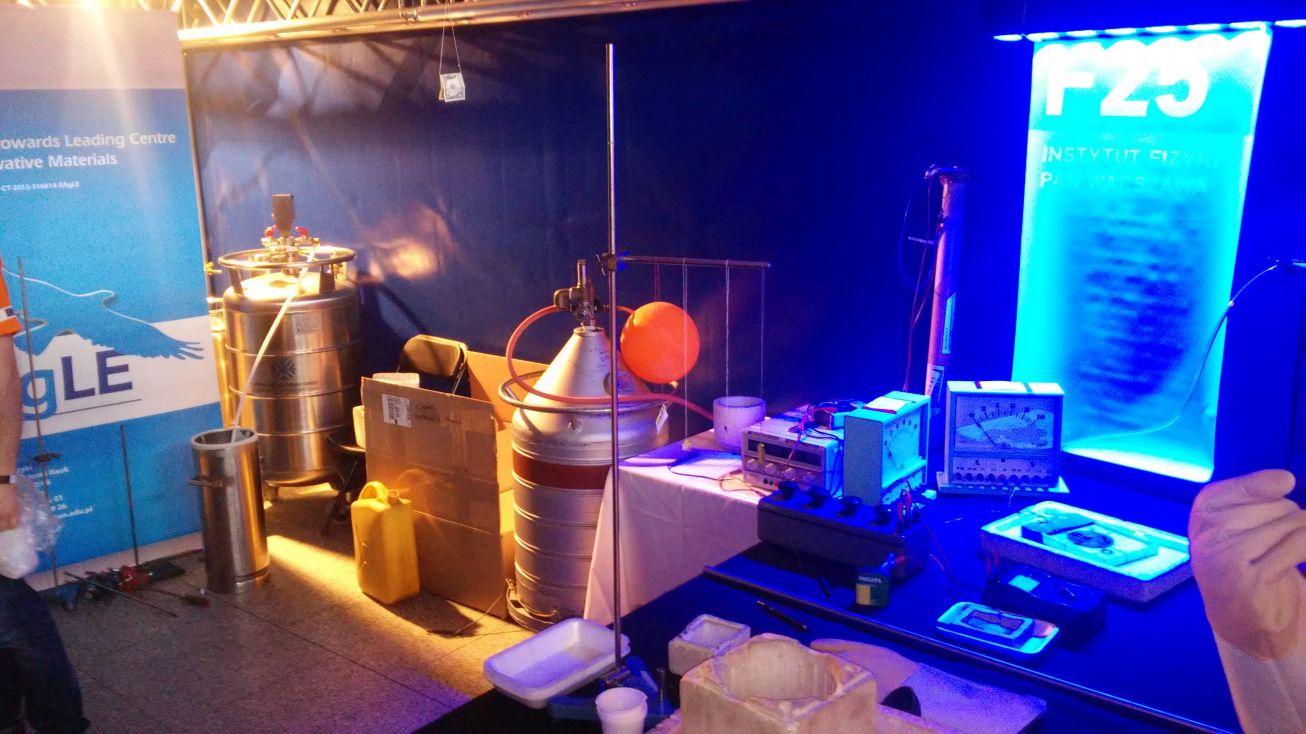
Our equipment taken for the Picnic (120 l of liquid nitrogen, 40 l of liquid helium).
At the right, there is a system for demonstrating zero-resistance
of superconductor cooled in LN2.
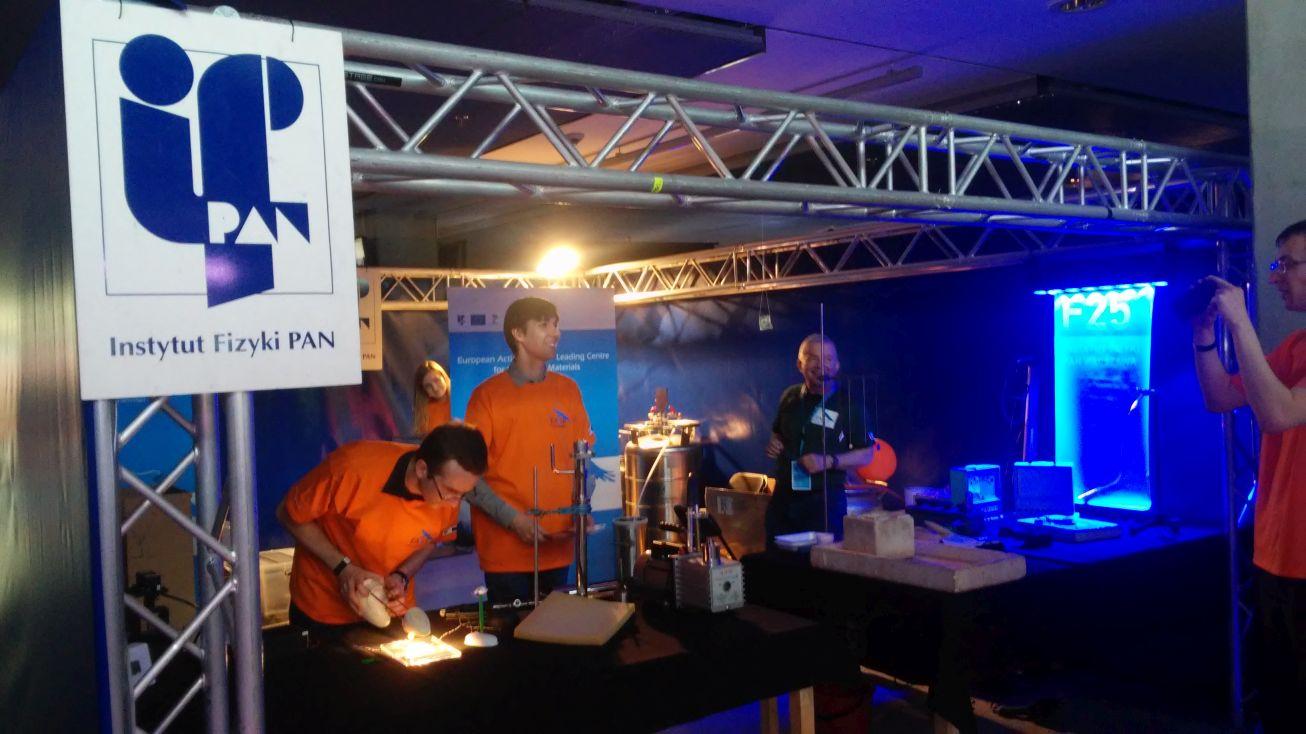
General view of our stand (Number F25) at 19th Scientific Picnic.
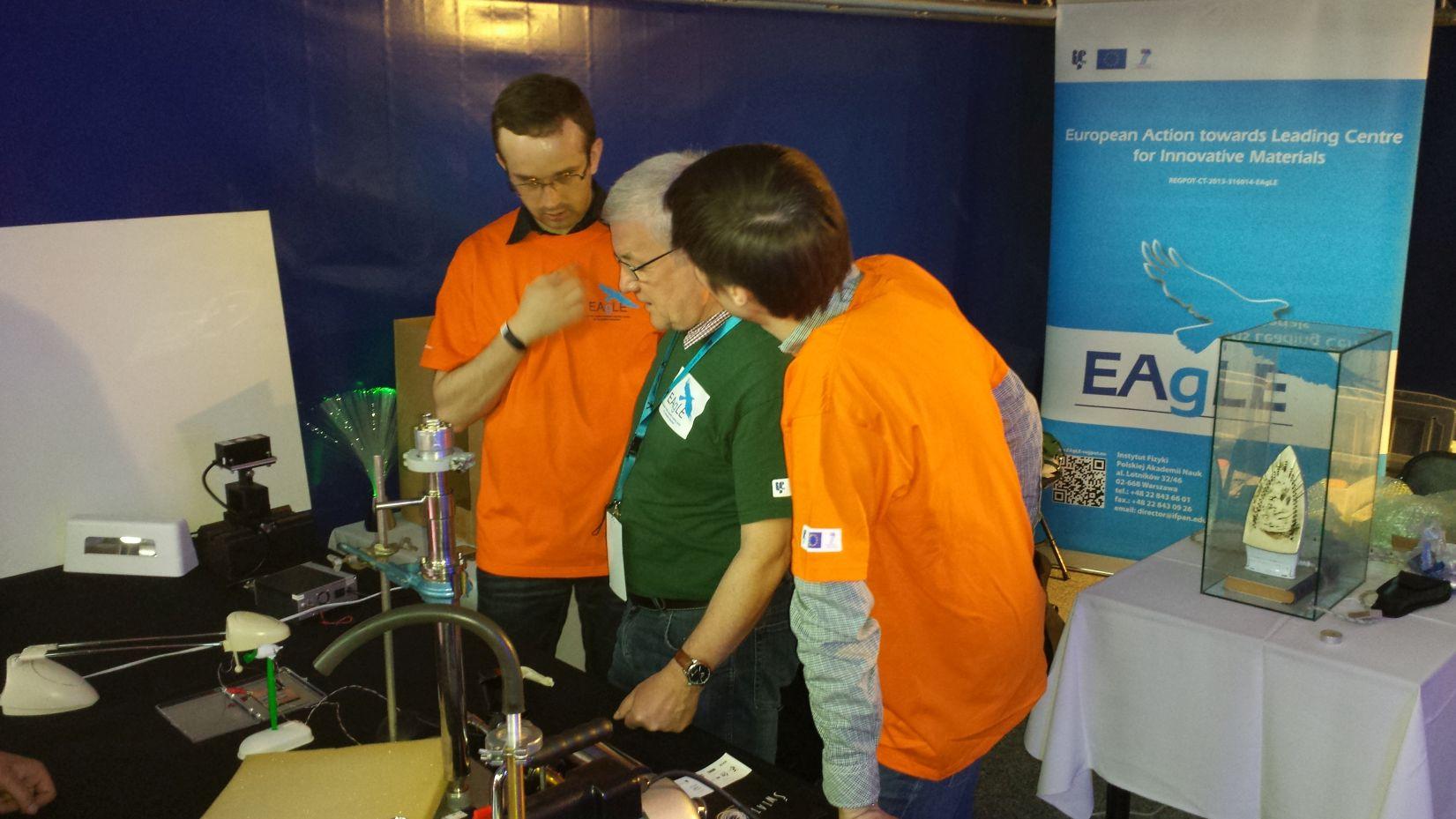
Discussion before the Picnic (R. Pietruszka, G. Grabecki, I. Bragar)
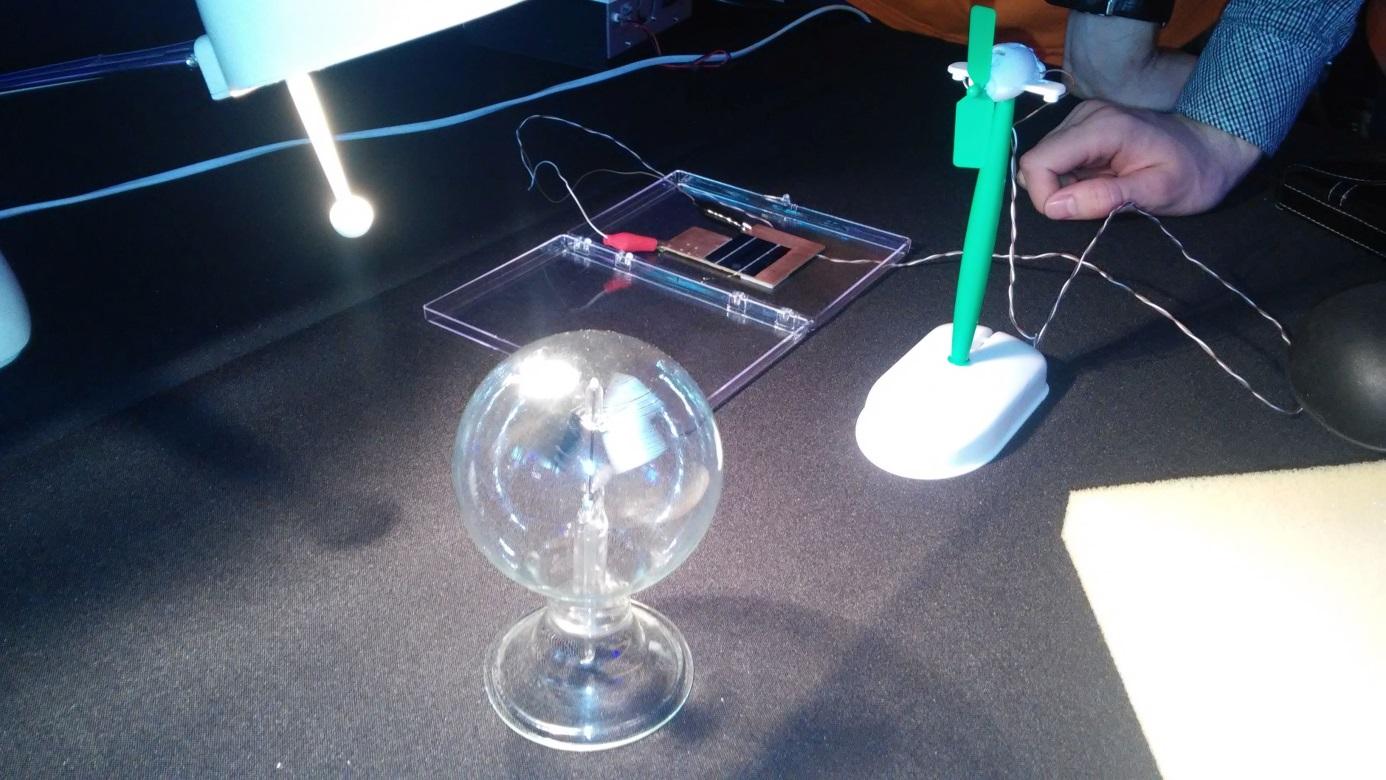
Fotovoltaic cell and Maxwell fan demonstrated by R. Pietruszka.
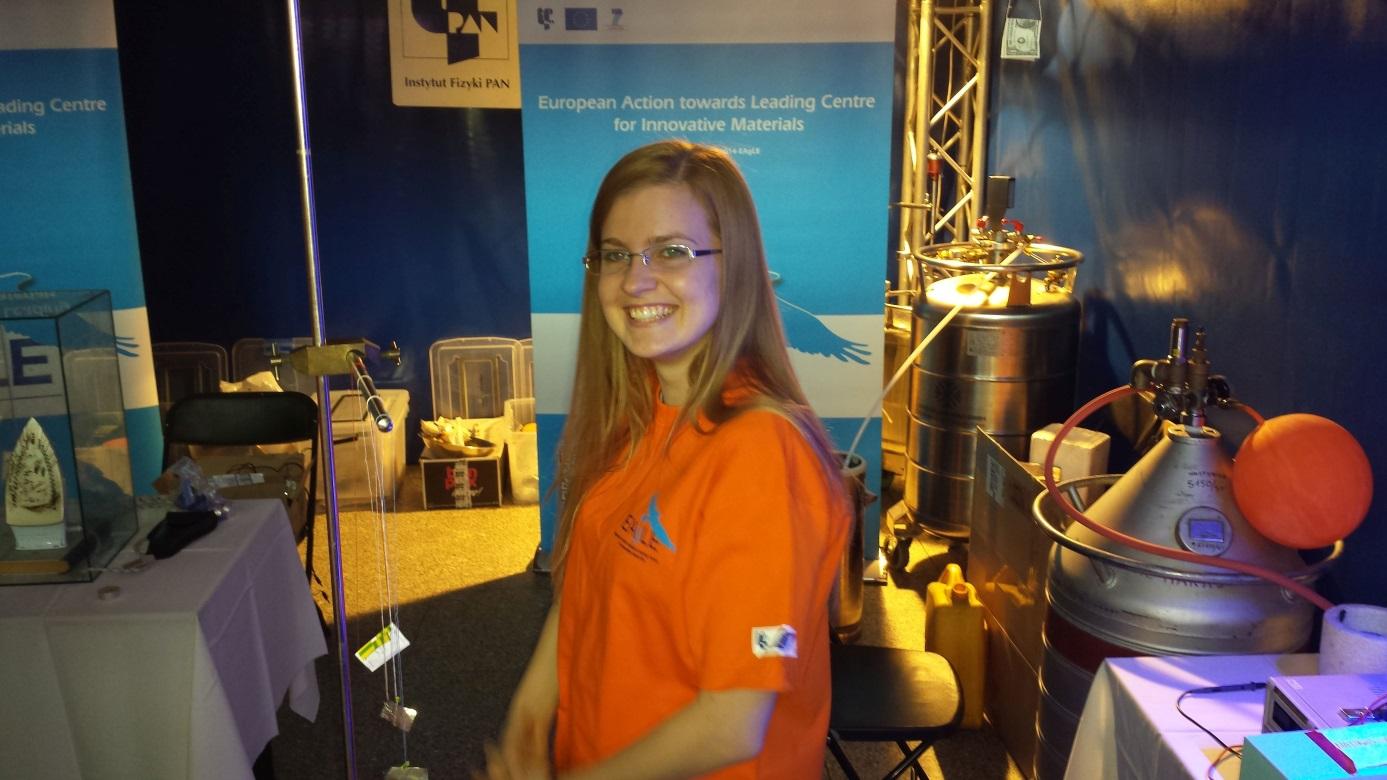
Ferromagnetic bodies presented by M. Majewicz.
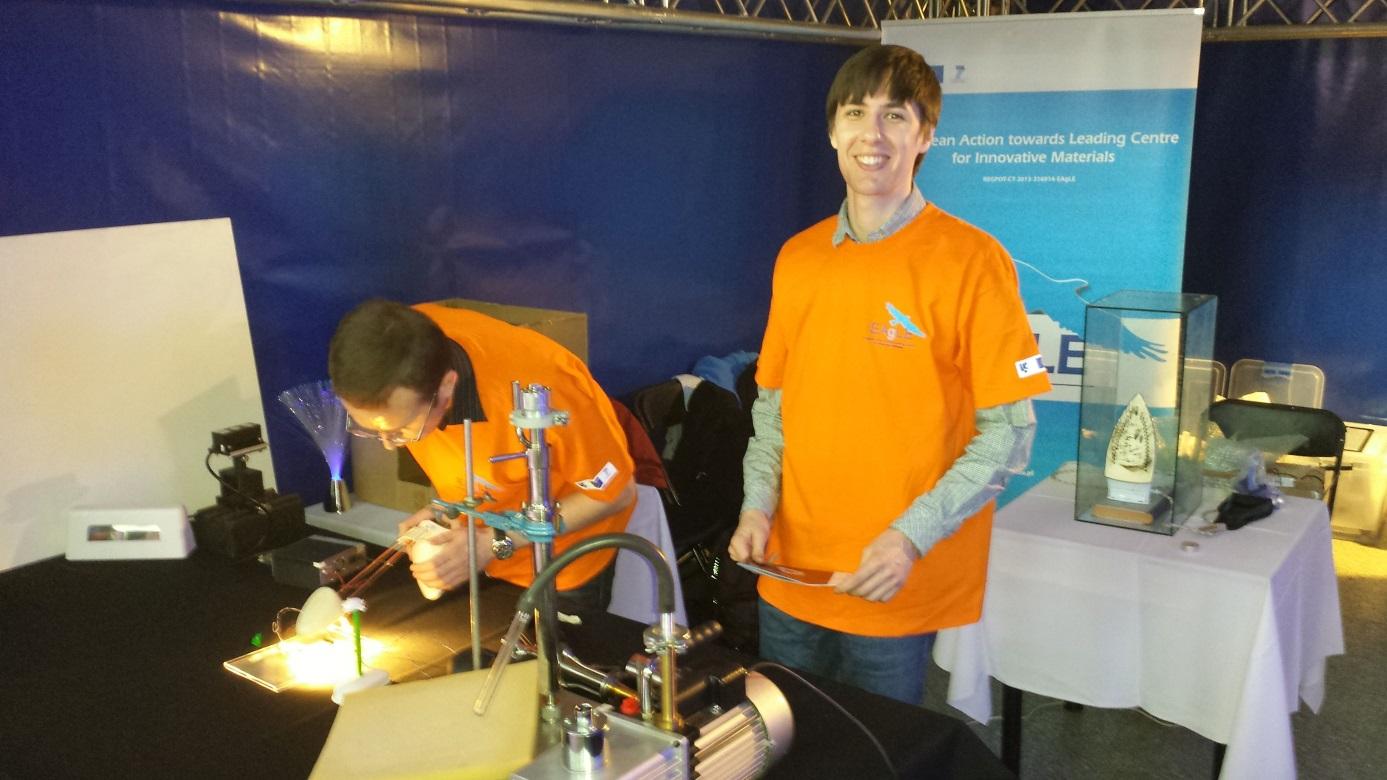
R. Pietruszka and I. Bragar at the stand. Upstage the hot iron for demonstrating emission of an infrared light…





